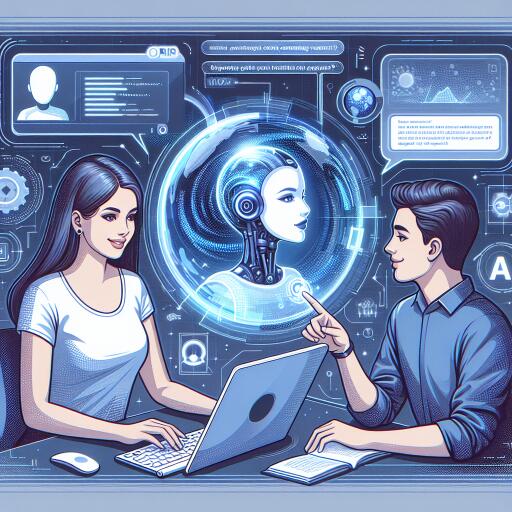Exploring the Capabilities of ChatGPT
In the fast-evolving domain of artificial intelligence (AI), one breakthrough that caught the public’s attention significantly in 2022 was the launch of ChatGPT by OpenAI. This innovative tool stands as a testament to the advancements in AI technology, with its foundation deeply rooted in OpenAI’s large language models (LLMs), particularly GPT-4. ChatGPT is not just another chatbot; it represents a pinnacle of current AI capabilities in understanding and generating human-like text, which has set new benchmarks for what machines are capable of achieving in terms of language comprehension and interaction.
The introduction of ChatGPT into the digital world was met with an overwhelming response. Its ability to engage users in conversations that are strikingly human-like in their depth, wit, and relevance has allowed it to garner immense popularity. Within just five days of its launch, ChatGPT managed to attract over a million users. This viral success can be attributed to the buzz it created on various social media platforms, where users eagerly shared their fascinating exchanges with the chatbot. From answering complex questions with surprising accuracy to writing poems, crafting essays, and even debugging code, ChatGPT demonstrated a versatility that was previously unimagined in the realm of AI chatbots.
The foundations of ChatGPT lie in the robust architecture of GPT-4, one of OpenAI’s most sophisticated large language models. These LLMs are trained on vast amounts of text data, enabling the system to predict the most probable subsequent word in a sequence based on the words that precede it. It’s this capability that allows ChatGPT to generate text that is coherent, contextually relevant, and often indistinguishable from that produced by a human. The level of sophistication in understanding nuanced language, slang, and even cultural references is what sets ChatGPT apart from previous iterations of AI chatbots.
Unlocking the Potential of ChatGPT
The introduction of ChatGPT has not just been a milestone in AI development but also a catalyst for exploring the potential of human-machine interaction. Its widespread adoption signals a growing recognition of the practical utility and entertainment value that AI can bring to our digital experiences. Whether it’s enhancing customer service, aiding in educational endeavors, or serving as a brainstorming partner, ChatGPT’s capabilities have only begun to be tapped.
As we continue to explore and integrate tools like ChatGPT into various aspects of our lives, the boundaries of AI’s utility will expand, leading to more innovative applications and, possibly, more advanced iterations of language-based models. The curiosity that ChatGPT has sparked among the public and the tech community alike is a promising sign of the growing trust and interest in AI technologies. As AI continues to evolve, so too will our relationship with it, opening up new possibilities for how we communicate, work, and create.
In essence, ChatGPT has not only challenged the limits of what artificial intelligence can achieve with language—it has also reshaped our expectations of human-AI interaction. As we stand on the brink of this new era, the journey of ChatGPT from a viral phenomenon to an integral part of our digital toolkit highlights the inevitable march of technology towards more intelligent, conversational, and engaging AI systems.










